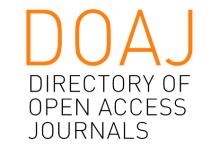Resource information
Down the centuries, a direct link had been developed between increase in mobility and increase in wealth. On the other hand, air emission of greenhouse gases (GHG) due to vehicles equipped with internal combustion engines can be regarded as a negative pressure over the environment. In the coming decades, road transport is likely to remain a significant contributor to air pollution in cities. Many urban trips cover distances of less than 6 km. Since the effectiveness of catalytic converters in the initial minutes of engine operation is small, the average emission per distance driven is very high in urban areas. Also, poorly maintained vehicles that lack exhaust aftertreatment systems are responsible for a major part of pollutant emissions. Therefore in urban areas, where higher concentrations of vehicles can be easily found, air pollution represents a critical issue, being it related with both environment and human health protection: in truth, research in recent decades consistently indicates the adverse effects of outdoor air pollution on human health, and the evidence points to air pollution stemming from transport as an important contributor to these effects. Several institutions (EEA, USEPA, etc.) focused their interest in dispersion models because of their potential effectiveness to forecast atmospheric pollution. Furthermore, air micropollutants such as Polycyclic Aromatic Compounds (PAH) and Metallic Trace Elements (MTE) are traffic-related and although very low concentrations their dispersion is a serious issue. However, dispersion models are usefully implemented to better manage this estimation problem. Nonetheless, policy makers and land managers have to deal with model selection, taking into account that several dispersion models are available, each one of them focused on specific goals (e.g., wind transport of pollutants, land morphology implementation, evaluation of micropollutants transport, etc.); a further aspect to be considered is the model scale: not every model can be usefully implemented in all conditions, e.g. for a careful simulation of the transport of pollutants in a range of 50 – 500 m, it is recommended to select Lagrangian or Eulerian tridimensional models, instead of Gaussian models, which may be preferable to simulate dispersion over longer distances. In addition, emission factors have to be evaluated as well, considering that nowadays vehicles release pollutants in the environment depending on both their engine and technological innovation level. Dispersion models are commonly used in order to define pressures on the environment, although phenomenon complexity and numerous interactions require continuous innovation. The paper aims to explain dispersion models implementation and to introduce the most used models available for both the transport sector and the GHG emissions in order to help land managers to better assess air quality thanks to a deeper comprehension of pollutants dispersion.



